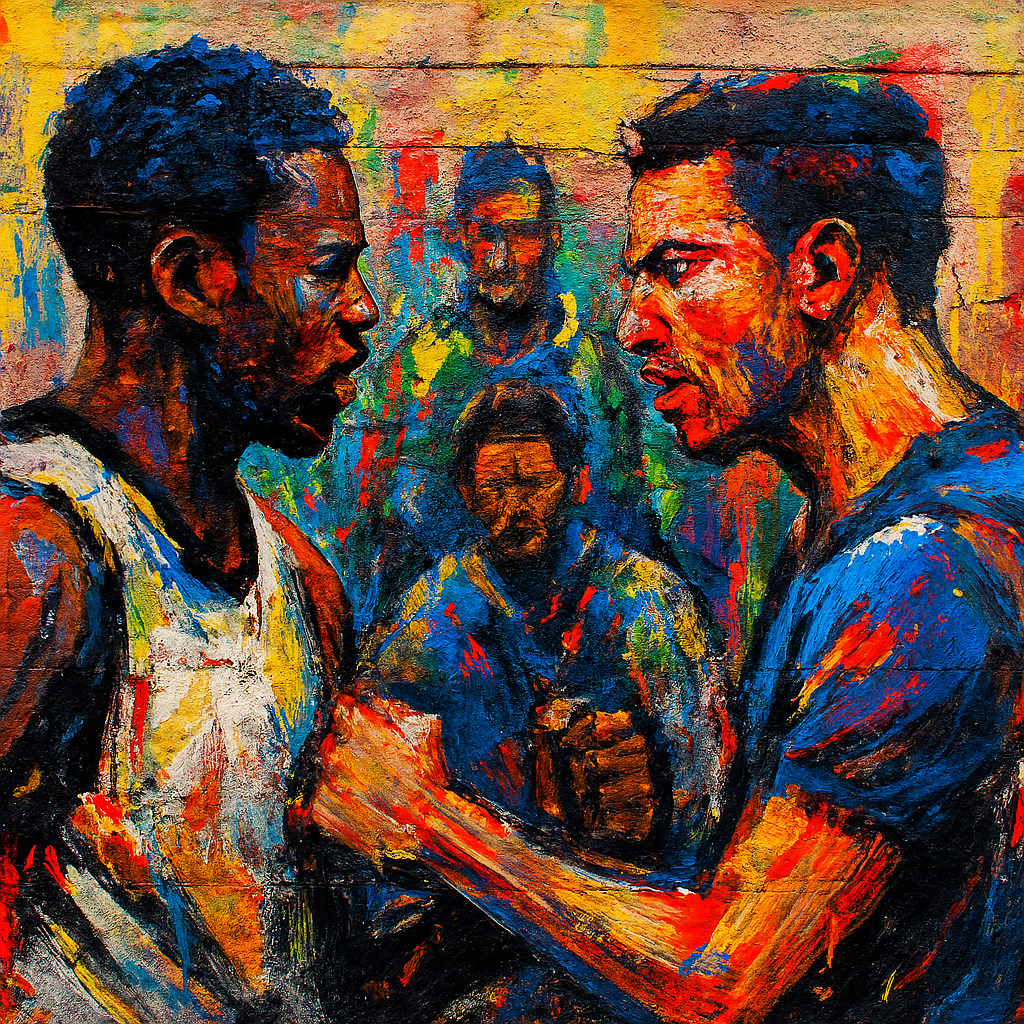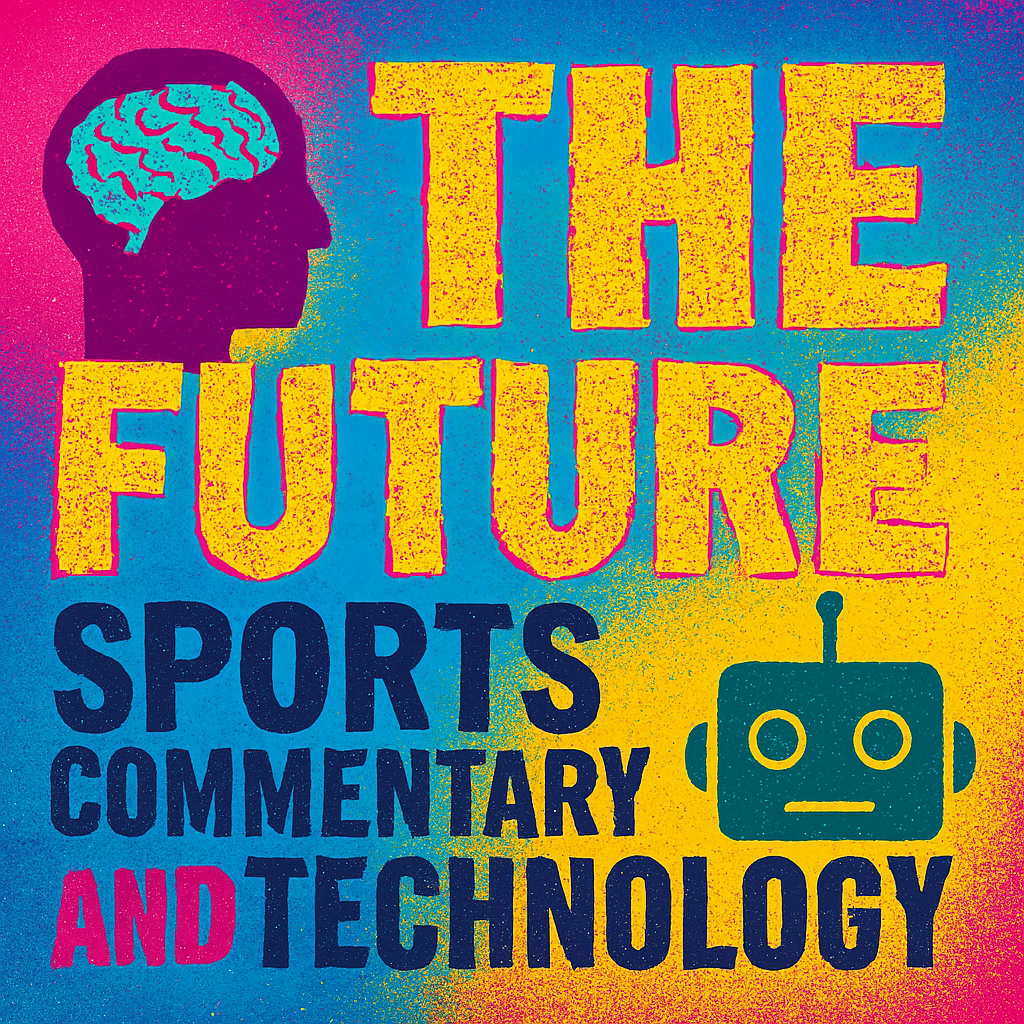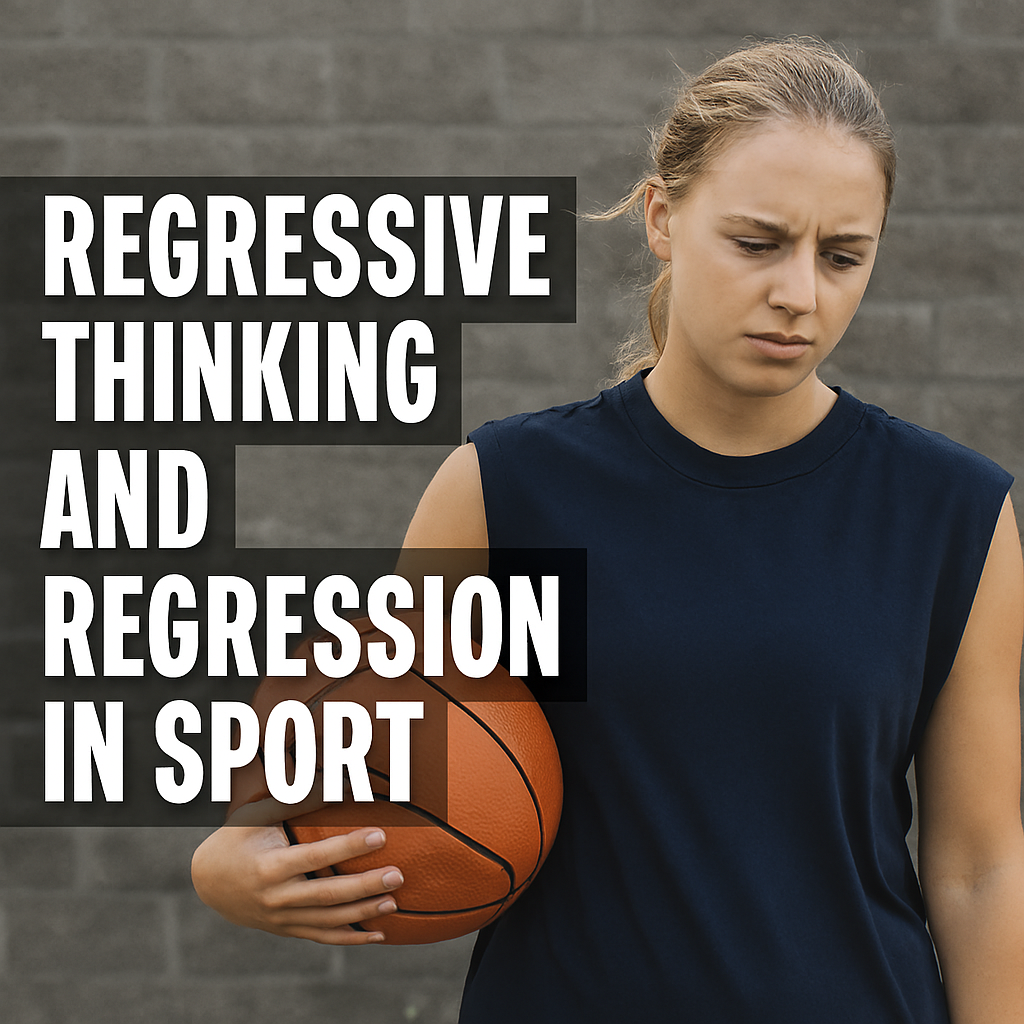The Disappearing Grandstand
Formula One was once a global ritual—accessible, thrilling, and shared across borders. Today, watching a race feels like chasing a signal through paywalls, geo-blocks, and fragmented platforms. Fans who grew up with free-to-air broadcasts now face subscription tiers, blackout zones, and legal ambiguity. The sport hasn’t lost its speed, but it’s losing its reach. The question isn’t just why the live stream isn’t free—it’s why the experience feels increasingly gated. Why Formula One Feels Further Away?
Broadcast Rights And The Price Of Speed
How Licensing Changed The Track
Formula One’s broadcast rights are now sold country by country, often to exclusive paid platforms. This model maximizes revenue for the sport but fragments access for fans. In Australia, races moved from free-to-air to Kayo and Foxtel, locking out casual viewers. In the UK, Sky Sports holds exclusive rights, with limited highlights on Channel 4. Austria and Switzerland still offer free streams via ORF and Servus TV, but only within national borders. VPNs have become essential tools for fans trying to bypass geo-restrictions. The shift reflects a broader trend in sports media—monetize the moment, limit the reach. While revenue grows, viewership diversity shrinks. Fans in lower-income regions face disproportionate barriers. Formula One is global in spirit, but increasingly local in access.
Streaming Platforms And Fragmented Access
Where You Can Watch Depends On Where You Are
| Country | Platform | Free Access | Subscription Cost (Monthly) |
|---|---|---|---|
| Australia | Kayo, Foxtel | No | $25 – $55 AUD |
| United Kingdom | Sky Sports | No | £34 – £70 GBP |
| United States | ESPN, F1 TV Pro | Partial | $9.99 – $29.99 USD |
| Austria | ORF, Servus TV | Yes | Free |
| Switzerland | SRF, Servus TV | Yes | Free |
| India | F1 TV Pro | No | ₹299 – ₹599 INR |
Geo-blocking ensures that even free platforms are inaccessible outside their borders. Fans must navigate legal ambiguity when using VPNs to access foreign streams. The cost of watching varies wildly depending on location, currency, and platform bundling. Some regions offer race-day access only through premium sports packages. Others restrict replays or highlights to paid tiers. The result is a patchwork of access that undermines the sport’s global identity. Formula One is no longer a shared experience—it’s a segmented one. And for many, the signal is fading.

The Rise Of VPNs And The Ethics Of Circumvention
When Fans Become Technicians
Using a VPN to access Formula One streams has become a common workaround. Fans in blocked regions reroute their IP addresses to countries with free access. This practice, while technically legal in some jurisdictions, violates platform terms of service. It also raises ethical questions—should fans have to hack their way into a race? The rise of VPN use reflects desperation, not defiance. It’s a symptom of exclusion, not rebellion. Formula One’s digital walls have turned loyal viewers into digital nomads. The sport’s own app, F1 TV Pro, is geo-restricted in over 50 countries. Even paying subscribers may find themselves blocked while traveling. The irony is sharp—technology meant to connect fans now divides them. And the workaround has become the norm.
Global Access And The Illusion Of Universality
A Sport That Travels But Doesn’t Translate
Formula One brands itself as a global sport, yet its access model is increasingly regional. Fans in Europe may enjoy full coverage, while those in Africa or Southeast Asia face limited or no legal options. The illusion of universality is shattered by licensing deals that prioritize revenue over reach. Even the official F1 TV Pro platform is unavailable in key markets, despite demand. This creates a paradox—Formula One races in 24 countries, but broadcasts in far fewer. The sport’s digital footprint is wide but uneven, shaped by contracts rather than community. Fans in underserved regions often rely on illegal streams, not out of malice but necessity. The result is a fractured fandom, where access depends more on geography than passion. Formula One’s global identity is undermined by its own distribution model. The track may circle the world, but the signal doesn’t.
Table – F1 TV Pro Availability By Region
| Region | F1 TV Pro Available | Notes |
|---|---|---|
| Western Europe | Yes | Full access in most countries |
| North America | Yes | Available in US and Canada |
| Australia & NZ | No | Rights held by Kayo and Foxtel |
| Southeast Asia | No | Limited or no access in many countries |
| Middle East | Partial | Varies by country, often bundled with sports TV |
| Sub-Saharan Africa | No | No official access in most nations |
| South America | Partial | Available in select countries only |
The Emotional Cost Of Watching Less
When Ritual Becomes Rationed
For many fans, watching Formula One is more than entertainment—it’s ritual. Sunday races are woven into family routines, personal histories, and cultural rhythms. When access is restricted, the loss is not just visual but emotional. Fans feel disconnected from a tradition they once shared freely. The shift from free-to-air to paywalled platforms fractures that continuity. It turns a communal experience into a private transaction. The emotional cost is subtle but cumulative—disappointment, exclusion, and nostalgia for a more open era. Formula One becomes something to chase, not something to join. The sport’s emotional gravity weakens when its presence becomes conditional. And for many, the race is no longer just on the track—it’s in the effort to watch.
Points – Emotional Impact Of Limited Access
- Watching becomes a privilege, not a habit
- Fans feel alienated from a sport they once loved
- Rituals are disrupted—family viewings, race-day traditions
- Nostalgia grows for the free-to-air era
- Younger fans may never develop the same connection
- The sport feels less inclusive, more transactional
- Emotional investment declines when access is inconsistent
- Fans turn to highlights, losing the live experience
- The sense of global community weakens
- Formula One risks becoming a luxury, not a legacy
Monetization Versus Mission
Revenue Grows But Reach Shrinks
Formula One’s current media strategy is built on monetization. Exclusive deals with broadcasters bring in significant revenue, helping fund teams, logistics, and innovation. But this financial success comes with pros and cons at the cost of accessibility. The sport’s mission to grow its global fanbase is undermined by its own paywalls. New fans are less likely to engage when the barrier to entry is high. Existing fans may drift away when access becomes too complex or costly. The tension between profit and presence is not new—but it’s more visible than ever. Formula One must decide whether it wants to be a premium product or a global passion. The two are not always compatible. And the longer the sport leans toward exclusivity, the more it risks losing its soul.
Table – Revenue Sources Versus Fan Accessibility
| Revenue Source | Impact On Fans |
|---|---|
| Broadcast Licensing | Limits access to those with subscriptions |
| Sponsorship Deals | Increases brand presence, but not access |
| Race Hosting Fees | Drives expansion, but not always viewership |
| F1 TV Pro Subscriptions | Offers direct access, but geo-restricted |
| Merchandising | Accessible globally, but not tied to viewing |
The Rise Of Piracy As Protest
When Illegality Feels Like Loyalty
As legal access narrows, many fans turn to piracy—not to steal, but to stay connected. Illegal streams fill the gap left by restrictive licensing and regional blackouts. For some, it’s the only way to watch their favorite sport. This isn’t a fringe behavior—it’s a widespread workaround. Fans justify it not as theft, but as resistance to exclusion. They see themselves not as criminals, but as loyalists denied entry. Formula One’s response has been to crack down on piracy, but rarely to address its root causes. The harder it becomes to watch legally, the more normalized piracy becomes. This creates a dangerous cycle—restriction breeds circumvention, which justifies more restriction. And in the middle are fans who just want to watch a race.
Points – Why Fans Resort To Piracy
- Legal options are unavailable in their country
- Subscription costs are too high
- VPNs are blocked or unreliable
- Free-to-air alternatives have disappeared
- F1 TV Pro is not offered in their region
- They want to watch live, not just highlights
- Piracy feels like the only option
- They see it as loyalty, not theft
- The sport hasn’t offered a better solution
- They feel punished for caring

Geo-Blocking And The New Digital Borders
Access Defined By Coordinates
Geo-blocking is the invisible fence around Formula One’s digital content. It determines who can watch what, based solely on IP address. This practice is standard in media licensing, but its impact on fans is profound. A fan in Austria can stream every race for free, while a fan in Australia must pay a premium. The technology is precise, but the ethics are murky. It creates a digital caste system—those inside the zone of access, and those outside. VPNs offer a way around it, but not everyone can afford or configure them. The result is a sport that travels the world but builds walls online. Geo-blocking turns Formula One into a passport-controlled experience. And for a sport that sells itself as borderless, the irony is sharp.
Table – Geo-Blocking Impact On Fan Experience
| Scenario | Outcome |
|---|---|
| Fan in Austria uses ORF | Free, full access to live races |
| Fan in Australia without Kayo | No legal access to live races |
| Fan in India tries F1 TV Pro | Platform unavailable in region |
| Fan in UK without Sky subscription | Limited to highlights, no live coverage |
| Fan using VPN to access ORF | Possible, but violates terms and may be blocked |
The Future Of Access And The Risk Of Irrelevance
What Happens When Fans Stop Trying
There’s a limit to how much effort fans will make to stay connected. When access becomes too difficult, even the most loyal viewers may give up. This isn’t about apathy—it’s about exhaustion. The emotional labor of chasing streams, configuring VPNs, and navigating subscriptions wears people down. Formula One risks becoming a sport people used to love. The danger isn’t just losing viewers—it’s losing generations. Young fans raised on frictionless content may never bond with a sport that feels locked away. The sport’s future depends on its ability to be present, not just profitable. If Formula One wants to grow, it must be seen. And right now, it’s disappearing behind its own paywalls.
The Vanishing Highlights And The Shrinking Window
When Replays Replace Real-Time
Formula One’s shift toward premium live access has reshaped how fans engage with the sport. Many now rely on post-race highlights, often trimmed and delayed, to stay connected. These clips offer fragments, not the full arc of competition. The tension, strategy, and atmosphere of live racing are lost in compression. For fans without subscriptions, this is the only legal window into the sport. The shrinking availability of full-race replays further limits engagement. Some platforms have some restriction replays to paid tiers or specific regions. The immediacy of Formula One—its pulse and unpredictability—is dulled by delay. Highlights serve as consolation, not connection. And for many, the race is already over before they’re allowed to see it.
Table – Access To Highlights And Replays By Platform
| Platform | Live Race Access | Full Replay Access | Highlights Availability |
|---|---|---|---|
| F1 TV Pro | Yes | Yes | Yes |
| Sky Sports | Yes | Yes (with subscription) | Yes |
| ESPN | Partial | Limited | Yes |
| ORF / Servus TV | Yes (Austria only) | Yes (Austria only) | Yes |
| YouTube (F1) | No | No | Yes (short clips only) |
The Cost Of Loyalty In A Paywalled Era
Fans Who Stay Pay More Than Money
Remaining loyal to Formula One in 2025 requires more than passion—it demands persistence, technical fluency, and financial commitment. Fans must navigate subscriptions, geo-restrictions, and platform fragmentation just to watch a race. The emotional toll is rarely acknowledged. Loyalty used to mean showing up on race day; now it means solving access puzzles. The sport’s monetization strategy assumes fans will adapt, but many feel punished for caring. The cost isn’t just monetary—it’s time, effort, and emotional bandwidth. Formula One risks alienating its most dedicated audience by making loyalty feel like labor. The joy of watching is replaced by the stress of securing access. And for some, the price of staying connected is simply too high.
Points – Hidden Costs Of Formula One Fandom
- Time spent troubleshooting access
- Emotional frustration from missed races
- Financial strain from multiple subscriptions
- Technical barriers for older or less tech-savvy fans
- Loss of spontaneity in race-day viewing
- Reduced social engagement due to staggered access
- Increased reliance on unofficial sources
- Erosion of trust in the sport’s accessibility
- Feeling excluded despite long-term loyalty
- Viewing becomes a chore, not a celebration
Regional Inequity And The New Divide
Where You Live Shapes What You See
Formula One’s access model creates stark regional disparities. Fans in Europe enjoy broad coverage, while those in Asia, Africa, and Oceania face limited options. This divide is not based on interest or engagement—it’s shaped by licensing deals and market priorities. The sport’s expansion into new race locations hasn’t been matched by equal broadcast access. Hosting a Grand Prix doesn’t guarantee local fans can watch it live. This contradiction undermines the sport’s claim to global inclusivity. Regional inequity turns Formula One into a tiered experience. Fans in underserved regions feel like spectators to a sport they can’t fully join. The divide isn’t just digital—it’s cultural. And unless addressed, it will deepen.
Table – Race Locations Versus Local Broadcast Access
| Race Location | Local Free Access | Paid Access Only | No Legal Access |
|---|---|---|---|
| Australia (Melbourne) | No | Yes (Kayo, Foxtel) | No |
| Singapore | No | Yes (regional bundles) | No |
| Brazil (São Paulo) | Partial | Yes | No |
| South Africa | No | No | Yes |
| India | No | Yes (F1 TV Pro blocked) | Yes |
The Myth Of Digital Inclusion
Streaming Doesn’t Mean Accessible
Streaming was supposed to democratize access—bringing Formula One to every screen, everywhere. But the reality is more complex. Streaming platforms are often geo-restricted, subscription-based, and technically demanding. They require stable internet, compatible devices, and payment infrastructure. Many fans in emerging markets lack one or more of these prerequisites. The myth of digital inclusion masks the real barriers to entry. Formula One’s digital presence is wide but shallow—visible but not reachable. The sport’s reliance on streaming has created a new kind of exclusion. It’s not about whether the race is online but more it’s about who and how you can actually watch it live. And for millions, the answer is still no.
Points – Barriers To Streaming Access
- Unstable or expensive internet connections
- Lack of compatible devices (smart TVs, smartphones)
- Payment systems not supported in all regions
- Geo-blocking limits platform availability
- Language barriers in platform interfaces
- No local customer support for troubleshooting
- High data usage costs for live streaming
- Limited awareness of legal options
- Cultural mismatch in platform design
- Streaming assumes privilege, not universality
The Role Of Social Media And The Echo Of The Race
Watching Through Others
For fans without direct access, social media becomes a surrogate experience. Live tweets, highlight clips, and fan commentary offer glimpses into the race. But this secondhand engagement lacks depth and immediacy. Watching through others is not the same as watching yourself. The emotional connection is diluted, the narrative fragmented. Social media amplifies the race’s presence but doesn’t replace it. It creates a sense of proximity without participation. Fans become observers of observers, caught in a loop of mediated experience. Formula One’s digital footprint grows, but its direct connection shrinks. The race echoes across platforms, but the signal is faint. And for many, the roar of the engines is just a hashtag.
Table – Social Media Platforms And F1 Engagement Modes
| Platform | Engagement Type | Live Race Coverage | Fan Commentary | Official Highlights |
|---|---|---|---|---|
| Twitter / X | Live updates, reactions | No | Yes | Limited |
| Visual highlights, reels | No | Yes | Yes | |
| TikTok | Short clips, memes | No | Yes | Yes |
| YouTube | Post-race analysis | No | Yes | Yes |
| Discussion threads | No | Yes | No |
The Silence Between Races
When Absence Becomes The Norm
For fans without access, the weeks between races stretch longer. The silence isn’t just about waiting—it’s about exclusion. Without live coverage, replays, or reliable highlights, the rhythm of the season is broken. Fans lose the thread of competition, the evolving storylines, the emotional momentum. The sport becomes distant, abstract, and harder to follow. This absence erodes engagement over time. Formula One becomes something fans remember, not something they live. The silence between races becomes the dominant experience. And the sport’s presence fades—not because it stopped, but because it stopped being reachable.
The Erosion Of Spontaneity In Race Culture
When Watching Becomes Scheduling
Formula One once thrived on spontaneity—fans could tune in without preparation, without payment, without friction. The shift to subscription-based access has turned race-day into a interesting scheduled transaction with sometimes less meaning or can make more of an event. Viewers must plan around platform availability, blackout zones, and login credentials. The immediacy of sport is replaced by the logistics of streaming. Spontaneity is a casualty of monetization. Fans who once stumbled into races now need reminders, subscriptions, and stable internet. The thrill of catching a race by chance is gone. Formula One has become a calendar item, not a cultural moment. And the more structured the access, the less organic the connection. Spontaneity was part of the magic—and its absence is felt.
Table – Spontaneity Versus Structured Access
| Viewing Mode | Spontaneity Level | Barriers To Entry | Emotional Impact |
|---|---|---|---|
| Free-to-air TV | High | None | Inclusive, communal |
| YouTube Highlights | Medium | Delayed, partial | Fragmented, reactive |
| Subscription Streaming | Low | Paywall, geo-blocking | Isolated, transactional |
| VPN Workaround | Very Low | Technical setup, legal risk | Stressful, exclusionary |
The Disconnection Between Growth And Access
More Races, Fewer Viewers
Formula One has expanded its calendar, adding new circuits and increasing global visibility. Yet access to these races hasn’t kept pace. More events do not mean more opportunities to watch. The disconnect between growth and access is stark. Fans in host countries may not have legal means to view their own Grand Prix. Expansion without inclusion creates resentment. The sport’s footprint grows, but its reach shrinks. Formula One risks becoming a spectacle without spectators. Growth should mean more connection, not more restriction. And until access matches expansion, the sport’s trajectory remains uneven.
Points – Expansion Without Inclusion
- New races added yearly
- Broadcast rights remain regionally locked
- Host countries often lack free access
- Fans feel excluded from local events
- Growth prioritizes revenue over reach
- Calendar expansion doesn’t equal viewer expansion
- Emotional connection weakens with each barrier
- Global presence without global participation
- The sport grows, but the audience fragments
- Inclusion must be part of expansion strategy
The Role Of Language In Access
When Translation Isn’t Enough
Language is a subtle barrier in Formula One’s digital ecosystem. Streaming platforms often default to English, leaving non-English-speaking fans underserved. Commentary, interface design, and customer support reflect limited linguistic diversity. This creates friction for fans in Latin America, Asia, and Africa. Even when races are available, the experience may feel foreign. Translation tools help, but they don’t replace native engagement. Language shapes emotion, and emotion drives loyalty. Formula One’s global ambition demands linguistic inclusivity. Without it, access remains partial. And for many, the race is lost in translation.
Table – Language Support Across Streaming Platforms
| Platform | Primary Language | Multilingual Commentary | Interface Translation | Customer Support Language Options |
|---|---|---|---|---|
| F1 TV Pro | English | Limited | Partial | English only |
| Sky Sports | English | No | No | English only |
| ORF / Servus TV | German | Yes | Yes | German only |
| ESPN | English / Spanish | Yes | Yes | English, Spanish |
| YouTube (F1) | English | No | Partial | English only |
The Fragmentation Of Fan Identity
When Access Shapes Allegiance
Access doesn’t just determine who watches—it shapes how fans identify with the sport. Regional restrictions create fragmented fan cultures. Some fans follow only highlights, others rely on social media, and a few manage full live coverage. These modes of engagement produce different emotional rhythms. Fans who watch live feel the tension and timing; those who catch clips experience the sport in fragments. Identity becomes shaped by access, not just passion. Formula One’s global fanbase is no longer unified—it’s stratified. The sport’s emotional core is diluted by uneven participation. And the sense of shared experience fades with each barrier.

Points – How Access Shapes Fan Identity
- Live viewers experience full emotional arc
- Highlight watchers engage in fragments
- Social media fans rely on secondhand commentary
- VPN users feel like outsiders
- Regional fans may miss their own races
- Identity becomes tied to platform, not passion
- Shared experience is replaced by segmented engagement
- Emotional investment varies by access level
- Fan culture becomes regionally siloed
- Formula One loses its unified voice
The Commercialization Of Nostalgia
Selling The Past To Distract From The Present
Formula One increasingly markets its history—classic races, legendary drivers, iconic moments. Nostalgia becomes a product, packaged and sold to fans. This strategy distracts from current access issues. By celebrating the past, the sport deflects criticism of the present. Fans are invited to remember, not to participate. Nostalgia is powerful, but it can’t replace connection. The commercialization of memory risks becoming manipulative. Formula One must balance reverence with relevance. Selling the past should not excuse excluding the present. And fans deserve more than highlights of what they used to have.
Table – Nostalgia Content Versus Live Access
| Content Type | Availability | Emotional Impact | Access Model |
|---|---|---|---|
| Classic Race Replays | Widely available | Sentimental, retrospective | Free or low-cost |
| Driver Documentaries | Subscription | Personal, historical | Paywalled |
| Iconic Moments Clips | Free | Fragmented, celebratory | Social media |
| Live Race Coverage | Restricted | Immediate, immersive | Subscription, geo-blocked |
The Risk Of Cultural Detachment
When The Sport Stops Feeling Local
Formula One’s cultural relevance depends on its ability to feel local, even when global. When fans can’t watch races in their own country, the sport becomes abstract. Hosting a Grand Prix without broadcast access creates symbolic dissonance. The race is physically present but emotionally distant. Cultural detachment grows when fans feel excluded from their own event. Formula One risks becoming a visiting spectacle, not a shared tradition. Local engagement requires more than ticket sales—it demands visibility. Without it, the sport loses its cultural anchor. And the roar of the engines becomes background noise.
The Shifting Role Of Commentary And Connection
When Voices Become Barriers
Commentary used to be the bridge between fans and the race—a voice that guided, explained, and celebrated. Today, that bridge is often gated behind subscriptions or limited to specific regions. Fans who once relied on familiar voices now face unfamiliar accents, languages, or silence. The emotional cadence of a race is shaped by its narration. Losing access to commentary means losing part of the experience. Some platforms offer multilingual options, but many do not. The absence of local voices creates a sense of detachment. Commentary is not just information—it’s atmosphere. Formula One without its voices feels incomplete. And for many, the silence is louder than the engines.
Table – Commentary Access Across Platforms
| Platform | Commentary Language Options | Region Restrictions | Emotional Impact |
|---|---|---|---|
| F1 TV Pro | English, limited others | Geo-restricted | Informative but impersonal |
| Sky Sports | English only | UK only | Familiar, exclusive |
| ORF / Servus TV | German | Austria only | Local, immersive |
| ESPN | English, Spanish | US, Latin America | Regional, varied |
| YouTube (F1) | None (clips only) | Global | Fragmented, silent |
The Rise Of Platform Loyalty Over Sport Loyalty
When Fans Follow Access, Not Teams
As Formula One access becomes platform-dependent, fan loyalty shifts. Viewers align with the service that lets them watch, not necessarily with the sport itself. A fan may follow Sky Sports more closely than their favorite driver. The platform becomes the gatekeeper of emotion. This shift alters how fans engage, discuss, and remember races. Loyalty becomes transactional—based on subscription renewals, not shared history. The sport risks losing its centrality in favor of its distributors. Formula One becomes a product delivered by others, not a culture sustained by itself. Fans may still love the race, but they love the platform more. And that inversion carries consequences.
Points – Platform Loyalty Dynamics
- Fans subscribe to platforms, not just sports
- Emotional connection shifts to access providers
- Commentary and coverage shape fan memory
- Loyalty becomes tied to billing cycles
- Platforms dictate viewing habits
- Fans follow what’s available, not what they love
- The sport loses control of its narrative
- Regional platforms create siloed fan cultures
- Platform outages disrupt emotional continuity
- Formula One becomes a service, not a symbol
The Pros And Cons Of Formula One’s Current Access Model
Balancing Revenue With Reach
| Pros | Cons |
|---|---|
| Increased revenue from exclusive broadcast deals | Reduced accessibility for global fans |
| High-quality production and commentary | Fragmented viewing experience across regions |
| Targeted advertising and sponsorships | Emotional detachment due to paywalls |
| Platform innovation and app development | Geo-blocking limits spontaneity and inclusivity |
| Expansion into new digital markets | Piracy becomes normalized due to lack of legal options |
| Monetization supports team and tech investment | Cultural detachment in host countries |
| Subscription models offer premium features | Fans must navigate multiple subscriptions |
| Controlled branding and content distribution | Loss of unified global fan experience |
| Data-driven engagement strategies | Language and interface barriers for non-English users |
| Stronger commercial partnerships | Loyalty shifts from sport to platform |
The Emotional Geography Of Fandom
When Location Shapes Feeling
Formula One’s emotional geography is uneven. Fans in Europe feel immersed; fans in Oceania feel peripheral. The sport’s emotional impact is shaped by access, not just interest. A fan in Austria may feel closer to the race than a fan in Melbourne, despite physical distance. This inversion of proximity creates symbolic dissonance. Emotional geography matters—where you live shapes how you feel. Formula One’s global identity depends on emotional parity. Without it, the sport becomes a patchwork of privilege. Fans don’t just want to watch F1, they want to be in it and feel it with belonging. And belonging begins with access.
Table – Emotional Geography Of Formula One Access
| Region | Access Level | Emotional Connection | Symbolic Inclusion |
|---|---|---|---|
| Western Europe | High | Strong | Central |
| North America | Medium | Moderate | Partial |
| Oceania | Low | Weak | Peripheral |
| Southeast Asia | Low | Fragmented | Marginal |
| Sub-Saharan Africa | Very Low | Minimal | Absent |
The Disappearance Of Shared Rituals
When Race Day Stops Feeling Like A Holiday
Formula One used to be a shared ritual—families gathered, friends tuned in, communities celebrated. The shift to individualized streaming has eroded that communal rhythm. Watching alone on a device is not the same as watching together on a screen. The sport’s emotional resonance depended on shared experience. Race day was a holiday, not a transaction. Today, fans watch in isolation, often asynchronously. The ritual is broken, the rhythm lost. Formula One becomes a solo act, not a collective celebration. And the loss of ritual weakens the sport’s cultural gravity.
The Invisibility Of Casual Fans
When Occasional Viewers Are Left Behind
Formula One’s current access model favors committed subscribers and tech-savvy enthusiasts. Casual fans—those who tune in occasionally or discover the sport by chance—are increasingly excluded. The barriers to entry are too high for spontaneous engagement. Without free-to-air broadcasts or open digital windows, discovery becomes rare. Casual viewership once served as the gateway to lifelong fandom. Today, that gateway is gated, hidden behind paywalls and geo-blocks. The sport loses potential fans before they even begin. Formula One’s growth depends not just on retention, but on attraction. And casual fans are the first to vanish when access becomes effort. Their invisibility is a warning sign.
The Disconnect Between Marketing And Reality
When Campaigns Promise What Platforms Deny
Formula One’s marketing emphasizes inclusivity, excitement, and global reach. Campaigns showcase diverse fans, dramatic moments, and universal appeal. But the reality of access contradicts these messages. Many viewers cannot legally watch the races promoted to them. The promise of connection is broken by platform restrictions. This disconnect breeds cynicism and frustration. Fans feel misled, not inspired. Marketing becomes noise when it doesn’t match experience. Formula One must reconcile its image with its infrastructure. Otherwise, its message becomes hollow—and its audience, disillusioned.
The Symbolic Weight Of Being Left Out
When Exclusion Feels Personal
Access is not just technical—it’s symbolic. Being unable to watch a race feels like being told you don’t belong. Fans internalize exclusion, even when it’s caused by licensing or geography. The emotional impact is subtle but profound. Formula One becomes a symbol of distance, not connection. The sport’s cultural power weakens when it excludes. Inclusion is not just about availability—it’s about affirmation. Fans want to feel seen, not just sold to. And when they’re left out, the silence speaks volumes.

The Future Of Formula One Access
What Needs To Change
Formula One must rethink its access strategy if it wants to remain emotionally and culturally relevant. This means expanding legal viewing options, reducing geo-blocking, and offering multilingual support. It means treating fans as participants, not just consumers. The sport’s digital infrastructure should reflect its global identity. Free access in underserved regions is not charity—it’s investment. Platform partnerships must prioritize reach, not just revenue. Formula One has the technology to connect the world. What it needs is the will. And the future depends on whether it chooses inclusion over exclusivity.
Join The Discussion
Your Experience Matters
Have you struggled to watch Formula One in your region? Do you rely on VPNs, highlights, or social media to stay connected?
Conclusion – The Race Beyond The Track
Formula One is more than speed—it’s story, ritual, and connection. But when access becomes a privilege, the story falters. Fans chase streams instead of moments. Rituals fade into routines. The sport risks becoming a product, not a passion. Yet the solution is within reach. Inclusion is not a technical challenge—it’s a cultural choice. Formula One can choose to be present, visible, and shared. The race beyond the track is about belonging. And it’s time to open the gates.
#FormulaOneAccess #F1StreamingBarrier #GlobalFansDeserveBetter #RaceDayForAll #F1WithoutBorders #LetUsWatchF1 #F1EmotionalAccess #StreamingShouldIncludeEveryone #F1FanVoices #OpenTheTrack















Great Leader Or Strong Manager Power Psychology
[…] is a dynamic practice. It involves emotional intelligence, strategic thinking, and ethical clarity. Leaders must cultivate self-awareness, resilience, and adaptability. They shape culture, inspire vision, and guide behavior through psychological insight. Leadership […]